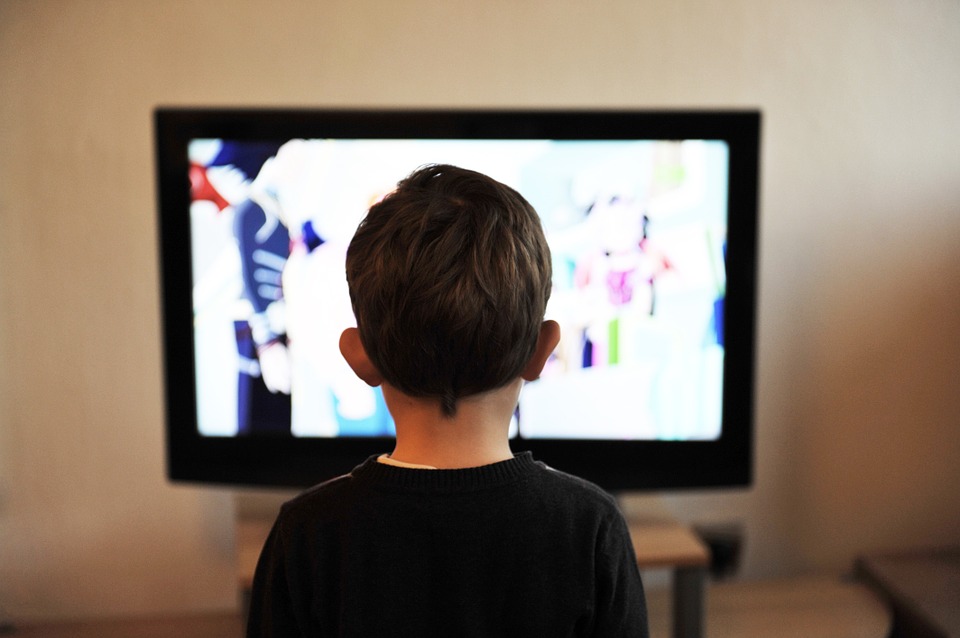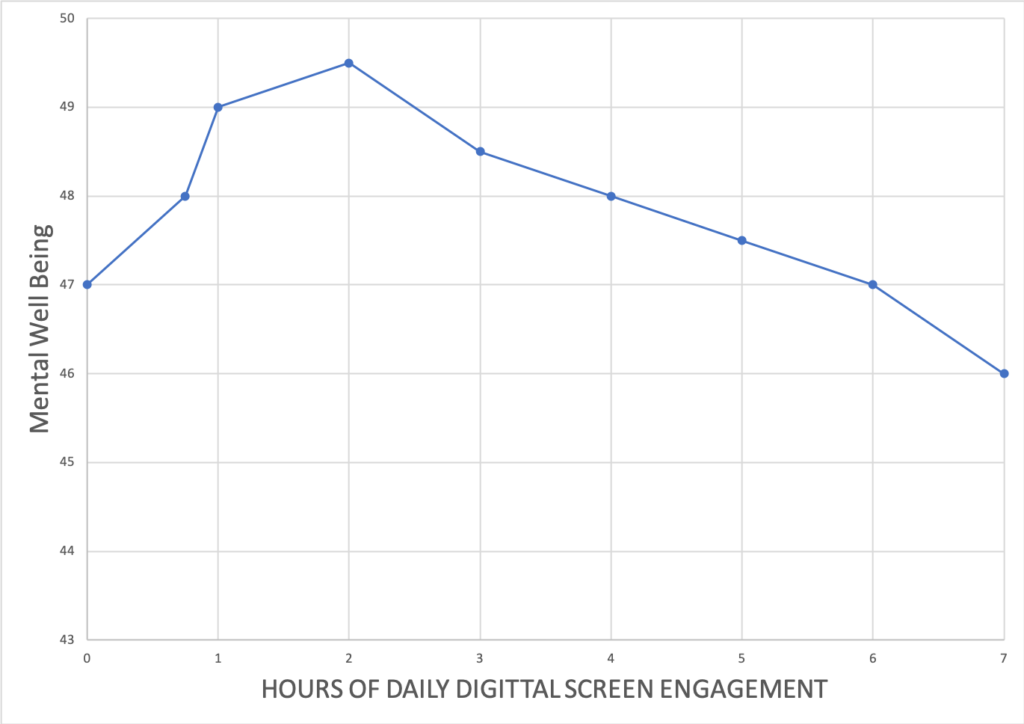Sitting in front of a screen is bad for you. Then it’s good for you. Then it’s bad for you again. But, like, only a bit. Allow me to explain.
Shortly after my book on the psychology of video games came out, I was invited to the Annapolis Book Festival to sit on a panel entitled “Video Games: Helpful Tool or Harmful Distraction?” My co-panelist and I planned to tackle the debate about video games and other screen time by discussing the benefits of video games and how they could help kids if parents were involved and informed. I even had notes. On little index cards. They were color coded.
But things didn’t go as planned. Within seconds, audience members had passed around a box of pearls and people were clutching for dear life. One man stood up and complained loudly that ever since his son had discovered Minecraft, he had not been able to get him interested in going outdoors for activities like flyfishing or furniture building. Others also lamented that their kids spent too much time in front of a screen.
We tried to take a more balanced approach based on research findings, but the audience wasn’t having it. At the end, the bearded flyfishing father expressed his disappointment over the misleading title of the panel. “I thought you were going to be on our side here and tell us how to fix this problem.”

He’s not alone in his concerns. One 2015 study of children in the UK showed that the amount of time kids spent online more than doubled from an average of 8 hours per week to almost 19 hours per week in just 10 years. It’s not unreasonable to wonder how that much screen time might affect kids’ well-being.
One of the dominant ideas in the screen time literature is “the displacement hypothesis.” This is just the idea that if kids are spending time in front of screens, it means other activities are being displaced from their day. If that audience member’s kid is playing Minecraft, he can’t be out in the woodshop learning to make mahogany fishing lures with his dad. Or whatever. I don’t know anything about fishing.
But what the displacement hypothesis doesn’t take into account is that people use screens to do many different things in many different ways. My older daughter, for example, may spend five hours a day in front of a screen, but in that time she’s probably…
- Chatting with friends in Discord
- Using a drawing tablet to create digital fan art for her current anime obsession
- Using Google to do research for her History homework
- Sitting in front of the TV with her mother to watch and discuss American Idol
- Listening to a podcast
- Playing the online competitive shooter Overwatch
- Using her cell phone to scroll through the Instagram feeds of artists she likes
Most studies and a lot of other parents would treat her screen time the same as another kid who just played Fortnite for five hours.
The point is that given how central digital devices are to the way we work, play, socialize, and communicate, there isn’t a monolithic thing called “screen time” that displaces other, more beneficial activities. In fact, we might expect that kids would be at a disadvantage in several ways if they didn’t get to engage in a certain amount of screen time. So as an alternative to the displacement hypothesis, we might take up the “Goldilocks hypothesis” that the relationship between mental well being is actually curvilinear. Too little screen is bad and too much is bad. But just the right amount of screen time should benefit mental well being.
This is exactly the hypothesis that two researchers from the University of Oxford tested in a paper called “A Large-Scale Test of the Goldilocks Hypothesis: Quantifying the Relations Between Digital-Screen Use and the Mental Well Being of Adolescents.” (Przybylski and Weinstein, 2017). The authors collected information from a frankly ridiculous number of adolescents in the UK, resulting in screen time and mental well being data on over 120,000 young people.
And they indeed found evidence for the Golilocks hypothesis, where mental well being went down with little screen use, rose some with a certain amount, then started to drop. They looked at different kinds of screen use, including watching TV or videos, playing video games, general computer use, and using smartphones. The same pattern of “Goldilocks” results in every case. Graphed out, the results looked something like this:

In fact, the researchers were able to specify empirically derived “inflection points” where screen use was beneficial up to that point, but then resulted in a downturn beyond. For weekdays, those inflection points were:
- 1 hr, 40 minutes per day for video game play
- 1 hr, 57 minutes per day for smartphone use
- 3 hr, 41 minutes per day for watching TV or videos
- 4 hr, 17 minutes per day for general computer use
On weekends, the inflection points were even higher.
One final thing to note about this study was that even beyond those inflection points, the effects of screen use were small: d = -0.18. This means that screen use beyond the inflection point accounted for less than 1% of the variability in a given kid’s mental well being. The authors provide further context by noting that “These analyses indicated that the possible negative effects of excessive screen time were less than a third of the size of the positive associations between well being and eating breakfast regularly (d = 0.54) or getting regular sleep (d = 0.58).” (pg. 210).
Furthermore, another study by University of Oxford researchers in 2019 also used data on screen time and psychological well-being collected from over 17,000 people in the UK, Ireland, and the United States (Orben and Przybylski, 2019). Their conclusion about the size of the effect of screen time on psychological well-being kind of puts things in perspective:
…Those adolescents who reported technology use would need to report 63 hr and 31 min more of technology use a day in their time-use diaries to decrease their well-being by 0.50 standard deviations, a magnitude often seen as a cutoff for effects that participants would be subjectively aware of. (ibid, pg. 12).
So play some games. Browse the web. Learn the social norms around communicating on the internet. Just be sure to get enough sleep and don’t skip breakfast.
REFERENCES
Ofcom. (2015). Children and parents: Media use and attitudes report 2015. Retrieved from http://stakeholders.ofcom .org.uk/market-data-research/other/research-publications/ childrens/children-parents-nov-15/
Orben, A., & Przybylski, A. K. (2019). Screens, Teens, and Psychological Well-Being: Evidence From Three Time-Use-Diary Studies. Psychological Science, 30(5), 682–696. https://doi.org/10.1177/0956797619830329
Przybylski, A. K., & Weinstein, N. (2017). A Large-Scale Test of the Goldilocks Hypothesis: Quantifying the Relations Between Digital-Screen Use and the Mental Well-Being of Adolescents. Psychological Science, 28(2), 204–215. https://doi.org/10.1177/0956797616678438



no<3